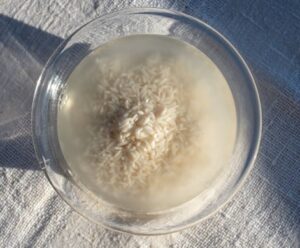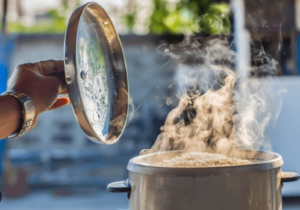How to Cook Rice, the Asian Way
Cooking rice might seem like the most basic skill in the kitchen, but achieving that perfectly fluffy, each-grain-separate texture is something of an art, especially when it comes to the Asian way of cooking it.
This isn’t just any ordinary pot-on-the-stove method; it’s the culmination of traditions that span thousands of years and a continent full of diverse cultures. Let’s embark on a culinary journey to master the Asian way of cooking rice!
The Asian Way of Cooking Rice
In Asia, rice is more than just a side dish; it’s a staple, enjoyed from the bustling streets of Bangkok to the serene countryside of Japan.
Each region has its quirks and methods, but there are common threads that tie the Asian rice-cooking experience together: the type of rice used, the washing of the grains, the water-to-rice ratio, and the cooking process itself.
Also Read: How Do You Use an Air Fryer for The First Time
Choosing the Right Rice
First off, the kind of rice you choose is paramount. Jasmine and Basmati are aromatic varieties often used, but for the stickier texture suited for sushi or Korean dishes, short-grain varieties are the go-to.
Washing the Rice
Now, to the washing – and yes, it’s non-negotiable. Washing rice is a ritual. It removes excess starch, ensuring your rice won’t turn into an unappetizing blob. Gently rinse the grains under cold water until the water runs clear. It’s a therapeutic process, almost meditative.
Also Read: How to Enjoy Cooking Even on Busy or Stressful Days
The Water-to-Rice Ratio
The water-to-rice ratio is the next crucial step. A general rule of thumb is about 1 and a half cups of water to 1 cup of rice, but this can vary. Trust your instincts a bit here, and remember, it’s better to err on the side of less water – you can always add a bit more if needed.
Cooking Process
With the preliminaries out of the way, let’s get cooking. If you’ve got a rice cooker, great – it’s a game-changer and revered in Asian kitchens. But the stovetop method is just as honorable.
Also Read: Your Guide to Always Keeping Things Clean
Step-by-Step Guide to Cooking Rice, the Asian Way
Step 1: Measure and Wash the Rice

Measure out your desired amount of rice using a cup. Place the rice in a large bowl, fill it with cold water, and gently wash the rice with your hands. Drain and repeat until the water is clear.
Step 2: Soak the Rice (Optional)

Some swear by soaking the rice for 30 minutes to an hour before cooking. It’s said to make the rice fluffier.
Also Read: Tips for Choosing a Perfect Kitchen Knives Set
Step 3: Cook the Rice

Transfer the washed rice to a pot. Add the appropriate amount of water. Turn the heat to high and bring the water to a boil. Then, lower the heat to a simmer and cover the pot.
Step 4: Let It Steam

Once the water is absorbed, and the rice is cooked (usually about 18 minutes), turn off the heat. Let the rice sit, covered, for another 10 minutes to steam. Don’t peek!
Step 5: Fluff and Serve

After the rice has steamed, fluff it with a fork or a rice paddle to let any excess moisture escape and to separate the grains.
Step 6: Enjoy Your Perfectly Cooked Rice

Serve your rice as a bed for a stir-fry, with curry, or as the main character in a sushi roll – the possibilities are endless!
Also Read: How to Organize Your Kitchen For Cooking
Tips for Success
- Consistency is Key: Find a method and stick to it. Consistency leads to predictable, perfect results every time.
- Quality Matters: Invest in good-quality rice; it does make a difference.
- Patience Pays Off: Don’t rush the cooking process. Let the rice cook and steam properly.
Closing Remarks:
Cooking rice the Asian way is an exercise in simplicity and perfection. Each step, from selecting the right kind of rice to letting it steam post-cooking, is a testament to the respect for this humble grain across Asia.
With these guidelines, you’ll be well on your way to achieving that fluffy perfection that will elevate any meal from good to great. Enjoy the process and the delicious results!
Also Read: Here is How Cooking Helps with Stress






